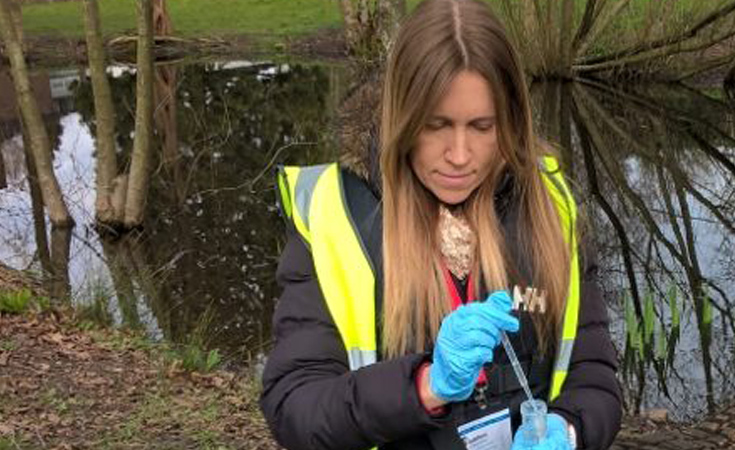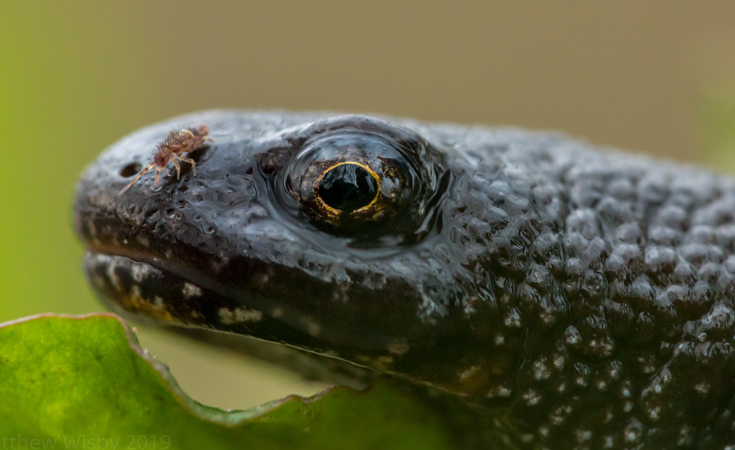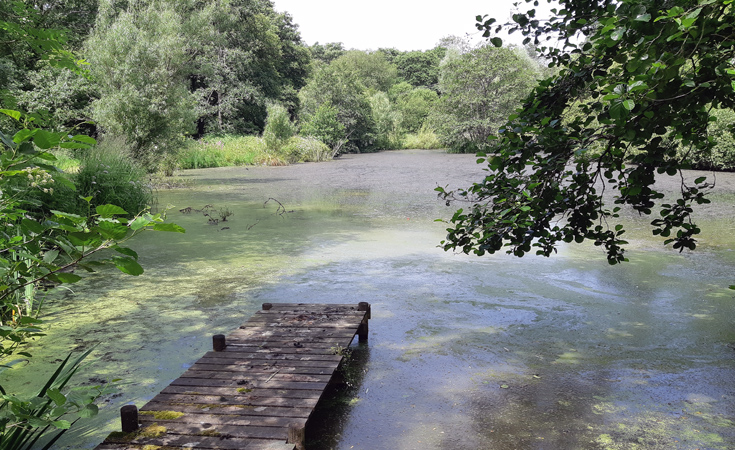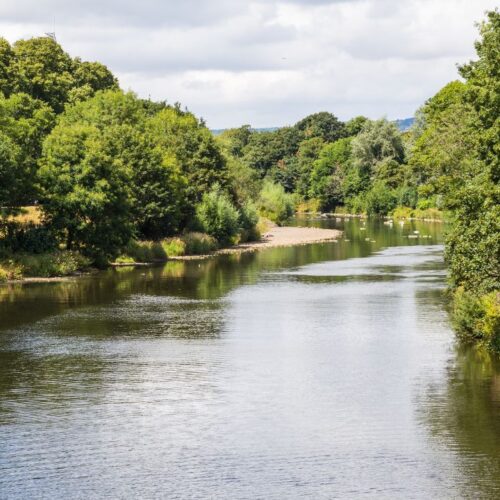This blog gives a short introduction to eDNA – why we use it and how it is revolutionising our approach to survey and monitoring for great crested newts (GCN) and other species.
eDNA: what is it?
Environmental DNA or eDNA, as it’s commonly known, is DNA from the cells of any organism (alive or dead) that is released into the environment. Sources of eDNA are skin cells, gametes, hair, mucus, carcasses and faeces. Depending on conditions, eDNA can persist in the aquatic environment for between 7 and 21 days, and can be detected in a single water or soil sample using specialist tests.
eDNA is now accepted by the nature conservation regulators, Natural England and Natural Resources Wales, as a useful alternative method for confirming the presence of great crested newts provided certain conditions are followed. For example, water samples must be collected by a licensed surveyor between 15 April and 30 June and processed in an approved laboratory.
eDNA: why it’s being used

Traditional techniques used to survey for GCN, such as egg-searching, night torching and bottle trapping, carry certain risks. Animals may become stressed or even die in bottle traps if they are left for too long, and eggs may be damaged during netting. Under current good practice guidance, these techniques must be repeated at least four times during the spring and summer season and are therefore labour and time intensive. Repeat visits also increase the risk of disturbance to both the animals and their habitat.
A 2015 study by DEFRA evaluating the accuracy of eDNA compared with traditional techniques in detecting the presence or absence of great crested newts in ponds found that the eDNA tests were accurate for 99.3% of pond samples which were known to have great crested newts present. This is much more effective than traditional bottle trapping (76% accurate), torch survey (74%) and egg searches (44%).
eDNA: how it’s being used
Changes in policy relating to great crested newt licensing mean that it is now only necessary to demonstrate the presence of great crested newts from a single visit to the water-body, rather than the traditional four visits. eDNA analysis is an approved method for demonstrating the presence of GCN. It should be noted, however, that a negative result from the first visit does not provide reliable confirmation that the species is absent from the site, and in these cases further visits are required.
eDNA: what Thomson is doing

Thomson is collaborating with Imperial College London to trial a technique for on-site testing of water samples for GCN eDNA using a newly developed hand held device. Manufactured by OptiGene, the Genie III device is able to provide a result within half an hour, compared with several weeks for standard laboratory tests.
Thomson ecologist Joe Salkeld who is managing the project says:
“We were keen to investigate the effectiveness of these devices as a means of improving efficiency and standardising GCN monitoring for large sites. The opportunity arose with Imperial College London to trial the Genie III device at a site where there is a known population of great crested newts.
“GCN population monitoring at DP World London Gateway has been carried out for the past seven years, and it provides the perfect site for testing the accuracy of GenieIII”
Watch this space for updates from these exciting research projects.
Although GCN breed in waterbodies during the spring, they spend the rest of the year in land-based, or terrestrial, habitat – usually rough grassland, woodland or scrub. Their territory may extend for hundreds of metres around the breeding pond if there are no obstacles in their way. Both breeding and foraging habitat are legally protected, so developers undertaking vegetation clearance run the risk of committing an offence even if the breeding pond is unaffected.

We are working with several clients, including Network Rail, to provide initial screening for GCN in areas where vegetation clearance is required. Ponds within 250m of the area where vegetation clearance is required are first identified through aerial imagery. If background records suggest that GCN may be present, a water sample is taken from the pond and tested for eDNA. More than one survey method is required to demonstrate absence where a potential breeding pond will be affected.

However, in this case, where only small areas of terrestrial habitat would be affected, a single negative result is acceptable and has allowed the work to proceed with a low level of ecological supervision. Where GCN are found to be present further surveys are undertaken and a licence may be required to undertake the work lawfully.
How Thomson can help you
Are you undertaking development, including vegetation clearance works soon? Enquire today about how Thomson Environmental Consultants can use eDNA to assess presence/absence of great crested newt and ensure that you’re compliant with UK and EU law.











